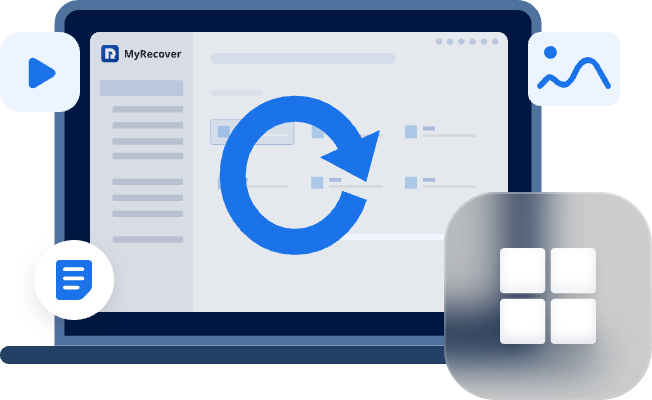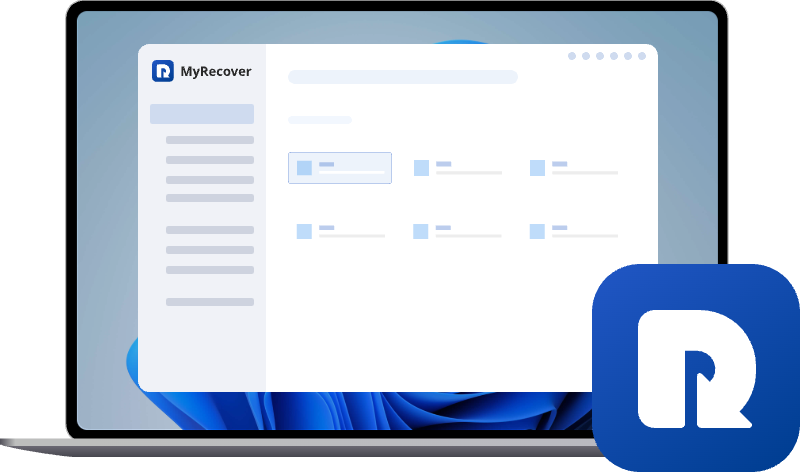Free PhotoRec Alternatives for Windows Users
Looking for a PhotoRec alternative for Windows? This guide explores top free options that let you recover lost photos, videos, and other files without hassle. Compare features, ease of use, and performance to find the best solution for your data recovery needs.
What is PhotoRec?
PhotoRec is a free and open-source file recovery software designed to recover lost files from storage devices like hard drives, memory cards, USB drives, and CDs. Despite its name, it’s not limited to photos—it can recover a wide range of file types, including documents, videos, archives, and more.
👉Also See: how to use PhotoRec to recover lost files step by step
Why You Need PhotoRec Alternatives?
While PhotoRec is powerful and free, it has several limitations that can make file recovery challenging for some users:
Complex Interface: PhotoRec uses a text-based interface that can be intimidating for beginners.
No Preview Feature: You can’t preview files before recovery, which makes it harder to select the right files.
Time-Consuming Process: Scanning and recovering files can take a long time, especially on large drives.
Limited User Guidance: It lacks step-by-step instructions and intuitive options, which may lead to mistakes during recovery.
These challenges drive many users to look for easier, more user-friendly PhotoRec alternatives that offer a faster, safer, and more guided file recovery process.
2 Best Free PhotoRec Alternatives for Windows
If you want a file-recovery tool that’s more user‑friendly or easier to operate than PhotoRec, or offers features that PhotoRec lacks, here are 2 best free alternatives for Windows users:
1: Windows File Recovery
Windows File Recovery is a free tool from Microsoft that helps you recoverlost files that have been deleted from yourinternal drives, external drives, and USB devices and data that can’t be restored from the Recycle Bin. Compared with PhotoRec, Windows File Recovery requires fewer steps to start recovering files, making it slightly more user-friendly for beginners.
Step 1. Open Microsoft Store, download Windows File Recovery, and install it.
Step 2. After installation, click the Windows key, search Windows File Recovery, right-click it and select “Run as Administrator”.
Step 3. In the elevated Command Prompt window, you can run a recovery command to recover files:
Example to recover all zip files from drive C: to folder D: winfr C: D: /regular /n *.zip
- Scan drive C: Look for deleted files on the C: drive.
- Recover results to drive D: Save the recovered files into a folder on the D: drive (Windows File Recovery will create a folder automatically, usually named Recovery_XXXX).
- Use Regular mode: /regular means the tool will use the Regular recovery mode—best for files that were recently deleted on NTFS drives.If you are trying to recover from FAT drive/ exFAT drive or damaged / formatted partition, use Extensive mode.
- Recover only ZIP files: /n *.zip filters the search to ZIP archives only, making the scan faster and more precise.
Step 4. When the recovery process is done, you can hit on "Y" key to directly check recovered files.
2: MyRecover
MyRecover is a beginner-friendlyand free Windows data recovery tool that provides a graphical interface—making it easier to use than PhotoRec and Windows File Recovery. With its clear UI, real-time scan results, and high recovery rate, MyRecover is an excellent free alternative if you prefer a point-and-click experience.
- ★Key Advantages:
- No command-line operations, perfect for beginners or professionals.
- Everything is done through simple clicks, making it accessible to anyone.
- Recover 1000+ file types, including photos, videos, documents, ZIPs, and more.
- You can see recoverable files before recovery (full preview is available in Professional edition).
- Supports damaged, corrupted, formatted, or deleted partitionsrecovery.
- Advanced scanning algorithms to detect data even on severely compromised drives.
Step 1. Visit the official website and download MyRecover. Install it on a drive different from the one you’re recovering, to avoid overwriting lost data.
Step 2. Launch MyRecover and choose the drive or partition where your files were lost.Then click “Scan”.
Step 3. MyRecover will automatically runa quick or deep scan. As the scan completes, you can choose or filter file type to only see the specific type of files.
Step 4. Check the files or folders you want to restore and click “Recover”.
Step 5. Choose a safe recovery destination, preferably another driveto prevent data overwriting.
After the recovery is done, you’ll see a message showing how many files were recovered and where they were placed. Just hit “Browse” to jump straight to the folder containing your restored videos.
PhotoRec vs Windows File Recovery vs MyRecover: Quick Overview
| Feature / Tool | PhotoRec | Windows File Recovery | MyRecover |
|---|---|---|---|
| Interface Type | Command-line (most complex) | Command-line (more beginner-friendly) | Graphical interface (easiest to use) |
| Best For | Advanced users | Beginner to intermediate users | All users, especially beginners |
| Difficulty Level | High | Medium | Low |
| Recovery Modes | Deep scan, multi-format support | Regular / Extensive modes | Quick Scan + Deep Scan |
| Recovery Speed | Moderate | Fast | Fast |
| Preview Feature | No | No | Yes |
| Filtering / Search | Basic filtering | Command-based filtering (e.g., *.zip) |
Advanced filtering (type/size/search) |
| Ease of Operation | Complex steps | Requires command input | Fully click-based workflow |
| Completely Free | ✔ Yes | ✔ Yes | ✔ Free (some advanced features paid) |
| Overall Ease of Use | ★★☆☆☆ | ★★★☆☆ | ★★★★★ |
Final Words
If you think PhotoRec is too complicated to master, and look around for workarounds, then Windows File Recovery and MyRecover are recommended free PhotoRec alternatives. Each offer effective ways to restore lost data, but they cater to different types of users. Windows File Recovery is simpler and suitable for users who prefer a built-in Windows solution, though it still relies on commands.
MyRecover stands out as the most user-friendly option with its intuitive graphical interface, real-time preview, and high recovery success rate—making it ideal for beginners or anyone who prefers a straightforward, click-based recovery process.Moreover, its Professional edition comes with "PC Crash Recovery” feature, allowing you to restore files from crashed or unbootable computer.


